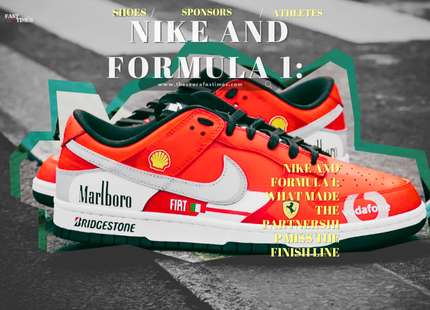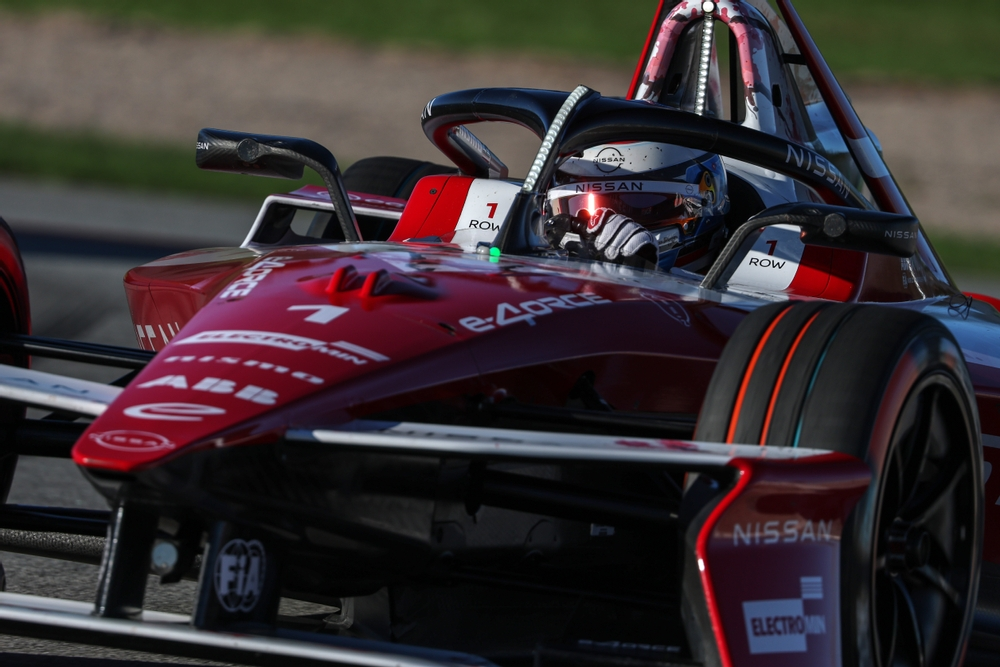
In 2025, the world of Formula 1 sportswear sponsorship saw a notable shift. Adidas stepped in as the official partner for Mercedes, following the departure of Tommy Hilfiger. This move expanded the field of F1 sportswear sponsors beyond the familiar names of Castore and Puma.
Yet, one major sportswear giant remains absent from the paddock: Nike.
Nike is a U.S.-based brand, while many of its competitors in F1 are European. Formula 1 has long been rooted in Europe, where the sport boasts a rich history and strong fanbase. Naturally, this has led to European brands dominating the sponsorship landscape.
But this is changing. The U.S. F1 fanbase is growing fast. In 2025, there are an estimated 52 million F1 fans in the U.S., a 10% increase from 2024. Globally, F1’s audience has surged to around 826.5 million fans. With the American team Cadillac joining the grid in 2026 and three U.S. Grand Prix events annually, the American market is becoming increasingly important.
This year, LVMH, one of the largest fashion and beauty companies in the world, partnered with F1 as one of its main sponsors.

The F1 market in the U.S. is no longer small or unstable, and with American team Cadillac joining next year, it’s only going to get bigger. Nike would make a formidable partnership with Cadillac and would likely further boost the F1 U.S. market. With three Grand Prixs in the U.S., there are endless marketing opportunities for Nike within their home country.
So why is it rumoured to be long-time F1 sponsor Tommy Hilfiger that is outfitting Cadillac?
The Perceived Mismatch Between Nike’s Brand and F1
Nike has built its reputation on being a brand that celebrates athleticism, sportsmanship, and the pursuit of personal excellence. Its marketing campaigns often focus on inspiring individuals to push their limits and achieve their goals, whether on the basketball court, the running track, or in their everyday lives.
The idea is that you can buy a pair of Nike shoes and be just like your favourite player. F1 is different. Drivers’ feet are rarely visible during races, limiting opportunities for Nike’s signature “wear it and perform like your hero” campaigns. The shoes F1 drivers wear are highly specialised gear made for safety and performance, not everyday use or style.
Additionally, Nike’s expertise lies primarily in the consumer sportswear market, where the emphasis is often on style, comfort, and brand appeal. The shoes F1 drivers wear are not made for everyday use, even when driving a road car. They, along with the team shirts, have very little to do with the performance or comfort of drivers, a significant roadblock for Nike’s marketing ethos.
F1 is a sport that is heavily focused on engineering, technological innovation, and the intense competition between teams and drivers. The sport’s image is often associated with the thrill of speed, the roar of engines, and the strategic battle between the teams’ pit crews and engineers. Somewhat contrary to Nike’s image.
Marketing Niches Hold Supreme over Potential
Ultimately, Nike’s decision to stay out of F1 reflects the evolving relationship between the U.S. sports market and spectator sports. Fans in the U.S. often support teams with fervour, passing down their devotion through generations. However, a strong trend toward supporting individual athletes has emerged, particularly among Gen-Z fans.
In the U.S., leagues like the NFL and NBA extensively promote star players, making them more prominent to fans than the teams themselves. Fans keep up with athletes’ social pages, lives and collaborations. The athlete, rather than the team, is more influential on fans (and their wallets).
Nike capitalizes on this marketing style by sponsoring athletes and teams that resonate with this trend. In tennis, for instance, Nike sponsors individual athletes whose performances directly link to the products they wear.
When Jannik Sinner won Wimbledon, Nike’s logo adorned his person from head to toe throughout the match and as he celebrated on the iconic balcony. Sinner’s footwork and resilience in the unusual warm temperatures of England showcased Nike’s brand in action.

Witnessing these athletic feats and successes compels consumers to explore the products. Just how comfortable, light, and bouncy are the trainers Sinner wears? The imagery of playing tennis at a local club on a warm summer’s day becomes irresistible, doesn’t it?
This is where Nike focuses its marketing niche and excels. Being able to select several teams or players across different teams allows for a more concentrated clientele, focused on success and visibility.
Drivers typically don’t secure clothing brands as individual sponsors due to potential conflicts with team sponsors, which prevents Nike from approaching individual drivers for partnerships.
Special edition team kits are also rare, usually reserved for championship victories. In contrast, Nike frequently creates special kits for specific events in sports like football and tennis, such as the all-white dress code at Wimbledon.
Drivers do create their own clothes for fans to buy, such as Lando Norris’ Quadrant line, or Hamilton’s Plus44 exclusive drops.
REPORT:
The Drive
Nike blocked Max Verstappen’s ‘Max1’ clothing line in 2023, due to similarties in name to the AirMax.
Are Nike protective of their branding or do they just not want to be assosciated with F1 at all?
A few years ago, Nike attempted to partner with Mercedes but withdrew after realizing that Mercedes disagreed with Nike’s plan to focus solely on their seven-time world champion, Lewis Hamilton, while excluding George Russell.
Ultimately, Tommy Hilfiger secured the contract to outfit the entire team, promoting both Hamilton and Russell, despite having closer personal ties with Hamilton. Hilfiger departed from Mercedes and F1 last year following Hamilton’s move to Ferrari.
This year, Hilfiger has shifted its focus to the F1 Academy, sponsoring a driver and car, and now provides all the fireproof gear for the Academy. They aim to join forces with Cadillac next year, leveraging their American ownership ties for a compelling partnership.
How Other Brands Navigate F1 Sponsorship

Brands like Puma and Castore have established their presence in F1 through recognizable logos on team kits, fireproof gear, shoes, and hats for teams such as McLaren, Ferrari, and Williams.
Puma targets top teams with rich motorsport histories, aligning with Ferrari, the most successful F1 team, and Williams.
Reports suggest that McLaren will partner with Puma for their team kit starting in 2026, although AlpineStars will continue to provide their fireproof gear. McLaren, currently leading the championships and second only to Ferrari in F1 history, fits perfectly into Puma’s clientele.
Adidas has made its mark on Mercedes’ fireproof gear, featuring its iconic three stripes on the drivers’ shoulders. This branding not only enhances visibility but also symbolizes the strength and resilience drivers need to withstand the high G-forces during races. When drivers exit their cars, the Adidas branding reinforces their connection to overcoming physical challenges.

Castore has also made a name for itself by appearing in drivers’ personal social media posts, especially when they discuss training or engage in other sports. Drivers like Lando Norris and Max Verstappen often sport non-team Castore outfits during padel outings, and Verstappen has been seen wearing Castore shirts while participating in Sim Racing.
Could Nike Carve Out a Niche in F1?
If Nike wishes to focus on individual drivers rather than teams, it could adopt a strategy similar to that of energy drink giant Monster. Monster branding appears on drink bottles, helmets, and fireproof gear for McLaren and previously for Mercedes. However, Monster collaborates with individual drivers, such as Lewis Hamilton and Lando Norris, on special edition drinks.
Nike could explore special collections with select drivers, perhaps featuring these collections during training-related social media posts or on media days when drivers typically wear their own clothes.
A glimpse of such a partnership in action is Lewis Hamilton’s exclusive collaboration with Dior. Although there is much less conflict with fashion brands and athletic brands, the Dior drop is one of a kind. Perhaps only Hamilton’s bigger-than-F1 status can achieve such individual fashion sponsorships without team conflict.

With Formula 1’s growing American audience and emerging teams such as Cadillac, Nike has a valuable chance to join this worldwide sport. Nonetheless, variations in brand approach, sport culture, and visibility obstacles have so far prevented Nike from participating.
If Nike finds innovative ways to address these challenges, like sponsoring individual drivers off-track or creating special collaborations with teams, they could become a more prominent part of F1’s future.


